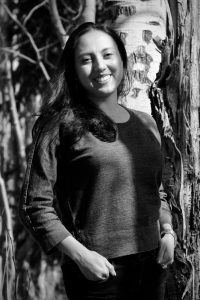Chemical Entanglements Speaker Abstracts and Biographies
Chemical Entanglements: Gender and Exposure
May 4-5, 2017
UCLA
SPEAKER ABSTRACTS & BIOGRAPHIES
Below are the abstracts and biographies for the Chemical Entanglements speakers in alphabetical order by last name. Abstracts will continue to be added to this list, so please check back regularly for updates.
KARIM AHMED
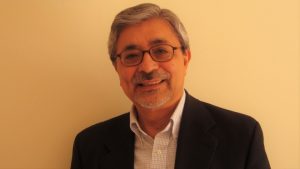 Abstract: The New Chemical World – Risk Analysis Challenges for Policy Makers
Abstract: The New Chemical World – Risk Analysis Challenges for Policy Makers
We live in a different world than our parents and grandparents. While the greatest health risk they faced was largely microbial in origin, we are confronted with an unprecedented proliferation of a new generation of chemical substances. With the rise of the environmental movement in the late 1960s, policy makers in developed countries began phasing out highly persistent chlorinated hydrocarbons, many of which were suspected carcinogens or mutagens. In addition, acutely toxic organophosphate compounds were severely restricted or banned. However, in the past few decades, a large number of chemicals were introduced in the market place that were quite unknown in the past. These are hormone-mimicking substances, known as endocrine disrupting chemicals (EDCs). The current risk analysis paradigm employed by federal and state agencies are no longer applicable or scientifically valid for assessing their health impacts on the public. Unlike other acute and chronic toxic compounds, EDCs do not follow a conventional monotonic dose-response relationship – the higher the dose, the greater the effect. In many instances, health effects of EDCs are observed at very low dose levels, much greater than those seen at intermediate doses. This poses a major dilemma for policy makers: how do they develop a health-based regulatory standard or set safety guidelines to protect the public from harm?
Biography
Dr. Karim Ahmed is an internationally recognized expert in the field of environmental health sciences, natural resource management and technology assessment. One of his specialty areas is related to the human health impacts of air- and water-borne pollutants on adults and children and in the evaluation of health risks of toxic substances, agricultural chemicals, unsafe consumer products and other hazardous materials.
Dr Ahmed is Director of International Program and Board Member at the National Council for Science and the Environment (NCSE) in Washington, DC. He is also an Adjunct Professor of Occupational and Environmental Medicine at the University of Connecticut Health Center (UCHC) in Farmington, CT. At UCHC, he teaches courses in children’s environmental health, environmental ethics, and green technology/sustainable development. Currently, he is an Honorary Professor at University of Cape Town (UCT) School of Public Health and Family Medicine.
One of Dr Ahmed’s chief areas of interests is the impact of climate change on human health and natural ecosystems, and in assessing mitigation and adaptation approaches to address them. In recent years, he has participated in a number of international fora on global climate change, water resource management, and public policy issues related to environmental planning, green technologies and sustainable development in different regions of the world. As an academic scientist, Dr. Ahmed’s current sphere of research interest is in field of physical biochemistry, systems analysis, computational biology and mathematical physics.
Previously, Dr. Ahmed served as Research Director and Senior Staff Scientist at the Natural Resources Defense Council (NRDC) in New York City, and was Deputy Director of Health, Environment and Development at the World Resources Institute (WRI) in Washington, DC. At NRDC, he directed a scientific program on a variety of environmental health issues at the national and international level. He was instrumental in leading a national and global effort to phase out the use of chlorofluorocarbons (CFCs), whose atmospheric release was linked to the depletion of stratospheric ozone layer.
Dr. Ahmed received a B.Sc. in Physics and Chemistry from University of Karachi, Pakistan, a M.S. in Organic Chemistry and a Ph.D. in Physical Biochemistry from University of Minnesota, Minneapolis, MN. He has conducted basic research in protein chemistry and molecular biology at the Biological Laboratories at Harvard University, Cambridge, MA, and was a post-doctoral research fellow in the Department of Laboratory Medicine and Pathology at the University of Minnesota Medical School, Minneapolis, MN.
MARTHA DINA ARGUELLO
 Abstract: Community-based responses to urban oil drilling
Abstract: Community-based responses to urban oil drilling
There are over 80,000 chemicals on the market yet we know very little about the health impacts of these chemicals. This is true for chemicals in products and chemicals that are released from m industrial processes like oil extraction and production. Los Angeles sits atop one of the largest urban oil fields in the country. Oil extraction occurs in extreme proximity to where people live, work and play throughout the southern California region. This presentation will focus on community lead efforts to enact a health and safety buffer zone around urban oil drilling and highlight how the broken regulatory system promotes the needs of industry over the needs of residents. This session will discuss what chemicals used in oil extraction, their impacts on health and how communities are using science, policy and organizing to address community concerns about urban oil extraction.
Biography
As a coalition builder, Martha has emphasized the need for local grassroots advocacy working in partnership with statewide policy actions. She is an active board member of numerous organizations, including Californians for Pesticide Reform, the California Environmental Rights Alliance, and Californians for a Healthy and Green Economy. She also co-founded the Los Angeles County Asthma Coalition and the Coalition for Environmental Health and Justice and was appointed to Cal/EPA’s Environmental Justice Committee and the California Air Resources Board’s Global Warming Environmental Justice Advisory Committee.
JESSE COHEN
 Abstract: Canaries in the Coal Mine: We Need One Another As Never Before
Abstract: Canaries in the Coal Mine: We Need One Another As Never Before
Canaries is a network of cis women, trans and gender-nonconforming people living and working with autoimmune conditions and other chronic illnesses. The group name references “canaries in the coal mine”—shorthand for those whose sensitivities are early indicators of adverse conditions in the environment. Canaries functions as a support group with monthly meetings, a listserv of over 120 members, and an art collective. This presentation will describe the general structure and evolution of Canaries, as well as how and why we have been moved to bring our advocacy work into art contexts.
We are told that in order to navigate illness, we must bring our symptoms to authorities and specialists. However, many of us have found that the symptom identification and diagnosis performed by the medical establishment denies our experiences and their causes. Though we frequently need traditional medical treatment, we also seek alternatives outside of the dominant system. Forming the Canaries community and creating extra-capitalist networks of care and information sharing has been critical to our survival as individuals. In our view, we cannot address the conditions of our physical/mental/emotional systems without also addressing the conditions of the systems within which we live: agricultural, political, relational, environmental. Though not all bodies are equally responsive to imbalance and toxicity, the expressions of highly sensitive bodies point towards deeply systemic issues that impact us all.
Biography
Jesse Cohen is an artist and cofounder of Canaries. For nearly 4 years, Canaries have worked alongside one another as friends and collaborators––serving as medical advocates, guides, and creative partners. While not all of the group’s members are artists, all have had somatic experiences which exceed interpretation by biomedical discourse. Canaries come together to build shared language and exchange strategies for coping with and learning from their conditions.
Canaries projects have facilitated conversations around chronic illness, immunity, and their larger-world implications, while also serving as a platform for sharing personal and communal care strategies with a greater public. For a recent artist residency, they created a storefront community center in downtown Manhattan with free resources and events such as a library, rest space, autoimmune nutrition workshop, fecal matter transplant presentation, and an open discussion on death and dying with death doulas. As an art collective, Canaries has exhibited projects, programmed screenings, and facilitated workshops at Cleopatra’s, Franklin Street Works, The New Museum, Light industry, and Project Row Houses.
DAVID CREWS
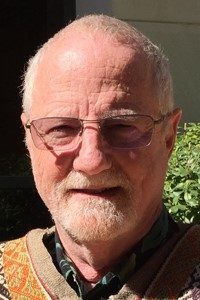 Abstract: Healthy Environments Build Healthy People
Abstract: Healthy Environments Build Healthy People
Our environment is now permanently contaminated. Beginning with the Industrial Revolution to the more recent Chemical Revolution, the confluence of environmental stressors has reached a point of no return. For example, endocrine disrupting chemicals (EDCs) continue to be produced and many persist in the environment. Even chemicals no longer in production (an example are polychlorinated biphenyls (PCBs), banned in the USA, Canada and Europe for decades) continue to be detectable in body tissues of virtually all wildlife (including humans). With climate change and the melting of polar ice caps, more PCBs are liberated into the environment such that the global burden is actually increasing in parts of the world. Organisms are exposed to mixtures of chemicals, often unique to particular geographies, and little is known about these effects at the level of individuals, even though population level effects are obvious. In environmental toxicology a guiding principle is that for every chemical there is a threshold level, below which there is no response. There is now clear evidence that for at least three EDCs there is no threshold. Because transitions between critical life stages (e.g., conception, birth, and adolescence) are modulated by a delicate balance of naturally occurring hormones, any EDC contamination changes endocrine signalling systems with severe consequences. We know that individuals with high body burdens of EDCs have compromised immune systems. These exposures in turn can become part of the germline and are transgenerational in their consequences. But focusing only on EDCs is overly narrow. Organisms living around human habitation must also contend with light when it should be dark, Increasing global temperatures impose challenges to thermal adaptations (via Q10 principles). Air pollution, hypoxic aquatic conditions, and open pit mining for metals and minerals are just a few of the other permanent changes in our ecosystems. Taken together anthropogenic changes to the environment represent a rapidly accelerating evolutionary force with unpredictable outcomes.
Biography
David Crews is the Ashbel-Smith Professor in Zoology and Psychology in the Department of Integrative Biology at the University of Texas at Austin. His research focuses on how the sexes are determined and differentiate. This research uncovered the mechanisms and outcomes of sex determination in vertebrates lacking sex chromosomes, showed how the hormone-behavior interactions evolve, and provided a deeper understanding of how the environment and behavior influence the structure and function of the brain. His work in the area of environmental contamination, particularly endocrine disrupting chemicals (EDCs), initially in wildlife and later in conventional animal models, has illustrated three principal points: (1) The assumption that for all chemicals there exists a threshold below which there is no adverse affect does not apply to EDCs as they share a common mechanism of action of naturally occurring hormones critical to development and function; (2) Except in very rare instances, environmental contamination consists of chemical mixtures, the elements of which interact in a complex manner different from that of each constituent chemical alone; (3) EDCs are driving evolutionary change in organisms, including humans. Crews has been a pioneer in the now vibrant field of behavioral epigenetics, particularly in the arena of transgenerational inheritance. He has published over 400 scientific articles and received many awards, most recently the Howard Bern Award from the Society for Integrative and Comparative Biology, the D.O. Hebb Distinguished Scientific Contribution Award from the American Psychological Association, the Exemplar Award for the Integrative Study of Animal Behavior, and the Daniel S. Lehrman Lifetime Achievement Award from the Society for Behavioral Neuroendocrinology. He is a Fellow of the American Academy of Arts and Sciences.
NOURBESE FLINT
 Abstract: Dying to Be Beautiful: A conversation about race, class and the rise of beauty industry at the risk of our health
Abstract: Dying to Be Beautiful: A conversation about race, class and the rise of beauty industry at the risk of our health
Each year Black women spend an estimated 9 billion dollars on beauty products, more than twice that of other ethnic groups. However many of the products marketed to and used by Black women are some of the most toxic on the market. Chemicals linked to skin irritation, reproductive and neurological disorders and cancer are in various everyday products like shampoos, nail polishes, lipsticks and hair sprays. Black hair and makeup professionals and consumers are experiencing the health consequences of an unregulated market and untested products. But is it just as simple as asking Black women to stop using these products? This presentation will highlight the recent findings around Black women and beauty products, looking at the links to health outcomes, while exploring how racial capital infuses itself into Black beauty culture.
Biography
Nourbese Flint serves as the Policy Director and manager of reproductive justice programs at Black Women for Wellness (BWW). Here, she directs reproductive and environmental health policy, organizes community advocacy, and manages reproductive and sexual health programming as well as civic engagement.
Before joining BWW, Nourbese studied women’s health in both Spain and Cuba and journalism in Scotland. Nourbese’s communications background includes serving as Communication Director for the Center of Women’s Health and Human Rights, as well as reporting for KPFK evening news. Nourbese has a Masters of Arts in Women’s Health from Suffolk University, where she specialized in health disparities as they relate to media influence. In addition, Nourbese is a proud alumnus of San Jose State University, where she majored in Broadcast Journalism and African American Studies.
Nourbese is a founding member of Trust Black Women, a national coalition dedicated to increasing respect and support of Black Women, and is the co-chair of girls policy for the California Women’s Agenda.
KIM FORTUN
 Abstract: From Bhopal to Late Industrialism and EcoEd
Abstract: From Bhopal to Late Industrialism and EcoEd
Extending from years of anthropological work in contexts of toxic disaster (fast and slow, in the United States and Asia), my research group has developed environmental education programs — and a way of thinking about toxics and education — that interlace critical perspectives on science, environment, health, media and education itself. Reaching students six to 60+, the programs have provided opportunities to figure out what insights from critical theories of knowledge (feminist, postcolonial, anti-racist, anti-essentialist, and so on) look like in practice, allowing us – following Gregory Bateson – to take Steps toward Ecology, with Late Industrialism in Mind. In this presentation, I’ll share our motivations, conceptualizations and examples of EcoEd in play.
Biography
Kim Fortun is a cultural anthropologist and Professor of Science & Technology Studies (STS) at Rensselaer Polytechnic Institute. Her research and teaching focus on environmental risk and disaster, and on experimental ethnographic methods and research design. Her research has examined how people in different geographic and organizational contexts understand environmental problems, uneven distributions of environmental health risks, developments in the environmental health sciences, and factors that contribute to disaster vulnerability. Fortun’s book Advocacy After Bhopal Environmentalism, Disaster, New World Orders was awarded the 2003 Sharon Stephens Prize by the American Ethnological Society. From 2005-2010, Fortun co-edited the Journal of Cultural Anthropology. Currently, Fortun is working on a book titled Late Industrialism: Making Environmental Sense, on The Asthma Files, a collaborative project to understand how air pollution and environmental public health are dealt with in different contexts, and on design of the Platform for Experimental and Collaborative Ethnography (PECE), an open source/access digital platform for anthropological and historical research. Fortun also runs the EcoEd Research Group, which turns ethnographic findings about environmental problems into curriculum delivered to young students (kindergarten-grade 12), and is helping organize both the Disaster-STS Research Network, and the Research Data Alliance’s Digital Practices in History and Ethnography Interest Group. Fortun co-edits a book series for University of Pennsylvania Press titled Critical Studies in Risk and Disaster, designed to connect academic research to public problems and policy, reaching audiences in different regions of the world. Currently, Fortun serves as Head of the STS Department at Rensselaer, and is President-elect of the Society for Social Studies of Science, the international scholarly society representing the field of STS.
ANDREA GORE
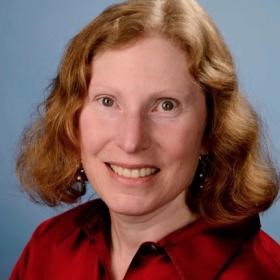
Abstract: Endocrine-disrupting chemicals: Sex differences and reproductive health effects in animal models
The chemical revolution that began during World War II transformed our world. While our lives are undoubtedly improved in many ways, we now know that a subset of chemicals, called environmental endocrine-disrupting chemicals (EDCs), have detrimental effects on the health of humans and wildlife. EDCs include some pesticides, industrial chemicals, and components of plastics and food contact containers, and we come into contact with EDCs every day. My laboratory is studying how EDC exposures, at dosages similar to what humans encounter, affect reproductive development and health in a rat model, and the differential vulnerability of females and males. We are focusing on the hypothalamus, a part of the brain that is integral to normal reproductive function, and that is sexually dimorphic in structure. Our results suggest that while both sexes are affected, the female rat hypothalamus is more vulnerable to EDC exposures during fetal development, and aspects of physiology and behavior are perturbed when assessed after sexual maturity has been attained. These studies underscore the exquisite sensitivity of the developing hypothalamus to EDCs, and the importance of evaluating reproductive outcomes in both sexes.
Biography
Andrea Gore, a professor of pharmacology and toxicology in the College of Pharmacy at the University of Texas, specializes in reproductive neuroendocrinology and the mechanisms by which the brain controls reproductive function. She received a $1.4 million grant from the National Institutes of Health to study how the brain may play a role in controlling the timing of menopause. Gore is one of several researchers who are realizing that a deeper understanding of the brain’s role in reproductive failure is needed to help in the creation of new therapies. She also is studying how environmental endocrine-disrupting chemicals (EDCs) such as polychlorinated biphenyls (PCBs) alter reproductive neuroendocrine function. This study looks at the effects of fetal PCB exposure on reproductive development and physiology, mating behavior and transgenerational effects.
LIZA GRANDIA
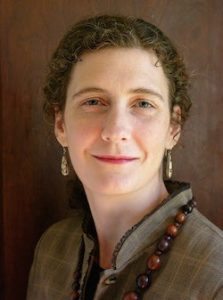 Abstract: Sickly Green: A Parable of Carpet and the EPA
Abstract: Sickly Green: A Parable of Carpet and the EPA
Wall-to-wall carpet: all-American, ubiquitous, soft, silent, and highly synthetic. While much attention has been given to improvements to modern carpet production through “corporate social responsibility” compacts led by CEO Ray C. Anderson and others to reduce the external effluents from factories, less attention has been paid to the internal pollutants emitted from carpets and carpet adhesives even years after installation. The paper recounts a little-known history of the EPA’s own encounter with “sick building syndrome” after new carpet (manufactured by Ebsco Mills in Dalton, Georgia) was laid at its Waterside Mall headquarters from October 1987 until summer 1988. Fumes from this remodel sickened some 880 EPA employees, particularly women, leaving at least 40 with life-altering multiple chemical sensitivities. Based on interviews with individuals involved and archival research of complaint letters, petitions, health surveys, physician statements and other documents assembled by Union 2050 in seeking investigation, remediation, and compensation for affected EPA workers, this paper examines how this ironic episode articulated with the agency’s response under Administrator William K. Reilly to growing concerns about indoor air pollution. Albeit inconclusive, the EPA’s internal scientific research suggested that a suspected neurotoxin called 4-Phenylcyclohexene (4-PCH) that polymerizes from carpet backing latex had likely triggered the EPA workers’ chemical hypersensitivity. Yet, two decades later this chemical remains a permissible ingredient in EPA-sanctioned “Green Label Plus” carpets and adhesive products promoted by the Carpet and Rug Institute. Initially described by EPA scientists as a problem of “tight building syndrome,” this “airshed” case illustrates persisting tensions within the environmental movement about the hierarchical trade-offs between outdoor and indoor pollution. In scoring disproportionate points for energy-saving designs, eco-friendly certification programs like the celebrated LEED standards may inadvertently be contributing to poorer internal air quality in platinum-rated buildings perhaps better described in shades of sickly green.
Biography
Liza Grandia, cultural anthropologist, is an Associate Professor in the Department of Native American Studies at the University of California-Davis. Since 1993, she has collaborated with numerous indigenous and environmental NGOs in Guatemala and Belize. She is the author of two ethnographies based on seven years of fieldwork: Enclosed: Conservation, Cattle and Commerce among Q’eqchi’ Maya Lowlanders (2012) and Tz’aptzooq’eb’: El Despojo Recurrente al Pueblo Q’eqchi’ (2009). She is founder and coordinator of the Q’eqchi’ Scholars Network and the Petén Scholars Network, which seek to connect researchers with social and environmental justice struggles. As the new director of the Indigenous Research Center of the Americas (IRCA), she hopes to foster more community-engaged and community-driven research across the hemisphere. Her own research and activist interests include: agrarian and biodiversity conservation issues in northern Guatemala and southern Belize; corporate and development threats to indigenous peoples; cultural perceptions of toxics in everyday life; GM-maize; hegemony and controlling processes; the commons.
TYRONE HAYES
 Abstract: From Silent Spring to Silent Night – A Tale of Toads and Men
Abstract: From Silent Spring to Silent Night – A Tale of Toads and Men
The herbicide, atrazine is a potent endocrine disrupter that chemically castrates and feminizes exposed male amphibians. Further, atrazine exposure results in neural damage and hyperactivity and induces a hormonal stress response that leads to retarded growth and development, and immune suppression. The immune suppression results in increased disease rates and mortality. Though many factors likely contribute to amphibian declines, pesticides (such as atrazine) likely play an important role even in populations that appear to decline for other reasons, such as disease. Pesticides like atrazine are ubiquitous, persistent contaminants and, though more pronounced in amphibians, the effects described above occur in all vertebrate classes (fish, amphibians, reptiles, and mammals) examined, via common mechanisms. These observations demonstrate the critical impact that pesticides have on environmental health. Furthermore, reproductive cancers and birth defects associated with exposure to many of these same chemicals (e.g. atrazine) via identical mechanisms demonstrate that the impact on environmental health is an indicator of a negative impact on public health. Many of these mechanisms are being revealed only now in the scientific literature and agencies are just now beginning to deal with this emergent science and translate it efficiently into health-protective policies. In particular, ethnic minorities and lower socio-economic communities are at risk: More likely to live in contaminated communities, work in occupations that increase hazard exposure and less likely to have educational and healthcare access. Given the importance of this science and relevance to public health, there is a strong need to translate this information and provide public access to this knowledge. Command of the science and active involvement by the public in policy decisions is vital.
Biography
Tyrone Hayes is Professor of Integrative Biology at the University of California, Berkeley. His research focuses on the role of steroid hormones in amphibian development and he conduct both laboratory and field studies in the U.S. and Africa. The two main areas of interest are metamorphosis and sex differentiation, as well as growth (larval and adult) and hormonal regulation of aggressive behavior. His work addresses problems on several levels including ecological, organismal, and molecular. In his work on metamorphosis, he studies a local toad (Bufo boreas). Studies examine the effects of temperature on developmental rates, interactions between the thyroid hormones and steroids, and hormonal regulation of skin gland development. He also examines the effects of tadpole density on developmental rates and measures metamorphic rates and hormone levels of tadpoles in the field and in the laboratory. His work on sex differentiation involves the African clawed frog (Xenopus laevis), the Japanese kajika (Buegeria buegeri), and the Pine Barrens treefrog (Hyla femoralis).
Currently, Hayes is also examining the effects of exogenous steroids on gonadal differentiation and the potential role of endogenous steroids. His main goal is to synthesize ecological/evolutionary, organismal/physiological, and biochemical/molecular studies to learn how an animal translates changes in its external environment to internal changes, how these internal changes are coordinated, what molecular mechanisms are involved, and in turn, how changes at the molecular level affect an animal’s ability to adapt to the changes in its external environment.
mark! Lopez
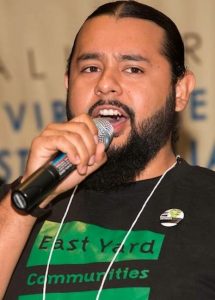 Abstract: Intergenerational Impacts, Intergenerational Struggle: The Exide Legacy as a Community Based Case Study
Abstract: Intergenerational Impacts, Intergenerational Struggle: The Exide Legacy as a Community Based Case Study
As the 3rd generation in his family to fight Exide, a battery recycling facility that released 7 million pounds of atmospheric lead into the East LA and Southeast LA communities, mark! will discuss the strategies of the struggle as well as the unanswered questions surrounding this historic community victory, which includes an unprecedented soil sampling and cleanup effort of over 10,000 residential properties. While the State of California prepares to address this massive environmental health disaster, the health and social impacts of the contamination are not being addressed. Soil washing, absent community solutions to the poisoning of multiple generations, does not absolve the state of it’s legacy of environmental racism.
Biography
mark! Lopez comes from a family with a long history of activism. He was raised in the Madres del Este de Los Angeles Santa Isabel (Mothers of East LA Santa Isabel – MELASI), an organization co-founded by his grandparents, Juana Beatriz Gutierrez and Ricardo Gutierrez. This set his trajectory as a community activist. He has engaged in a wide array of student activism at UC Santa Cruz where he earned his B.A. in Environmental Studies, and taught university courses at UC Santa Cruz, Cal State Northridge, and UCLA Extension. mark! earned his M.A. from the Chicanx Studies Department at Cal State Northridge, where he completed his Masters thesis titled The Fire: Decolonizing “Environmental Justice” (http://scholarworks.csun.edu/bitstream/handle/10211.3/152202/Lopez-Mark-thesis-2015.pdf;jsessionid=3203D23C97A69D7130D49FDF74A29E5C.server1?sequence=1). mark! joined East Yard Communities for Environmental Justice as a member three years before joining the staff. After serving as Lead Organizer for East Yard Communities and Co-Director with EYCEJ Co-Founder Angelo Logan, mark! is now the Executive Director. He organizes in the area where he was born, raised and continues to live.
SHAHIR MASRI
 Abstract: Toxicant-Induced Loss of Tolerance: An Emerging Disease Process
Abstract: Toxicant-Induced Loss of Tolerance: An Emerging Disease Process
Toxicant-Induced Loss of Tolerance, or TILT, is a two-stage physiological disease mechanism. Just as germ theory, immune theory, and allergy theory transformed the face of medicine, TILT too is emerging as a distinct disease process and an important role player in human health. Unlike other processes, TILT does not involve biological organisms. Rather, TILT originates from exposure to toxic chemicals. Stage I of TILT begins with an initial exposure “event” such as building remodeling, pesticide use, fire fumes, cleaning agents, drugs or surgical implants. In Stage II, affected individuals report intolerances to chemically unrelated substances, foods, and medications that never bothered them before, and which do not bother most people. Symptoms can involve any organ system, but effects on the brain and nervous system (memory, concentration, mood) tend to be most disabling. These new-onset intolerances are not easily treated except through careful avoidance. In some studies, women account for 80% of participants. Unfortunately, doctors in the past (psychologists, allergists, and occupational specialists) have dismissed symptoms as “psychogenic.” This has biased families, employers, the medical profession and key agencies including NIH and EPA against these individuals. Psychological symptoms are not necessarily psychogenic. They occur in “TILTed” individuals as a result of tangible chemical exposures, foods and medications. Globally, exposures to petrochemicals have grown exponentially since the 1950s. This two-stage pattern of disease now occurs in every industrialized nation in which it has been investigated, affecting Gulf War veterans, 9-11 survivors, oil spill workers and even regular communities.
Biography
Shahir Masri is an Assistant Specialist in Air Pollution Exposure Assessment & Epidemiology with the Program in Public Health at the University of California, Irvine. He investigates the characteristics and source contributions of ambient air pollutants and develops air pollution exposure models for use in epidemiological research. He is also an Environmental Consultant with Dr. Claudia Miller at the Hoffman TILT Research & Education Program at UTHSCSA. He writes a Toxic Talks Blog to translate TILT science into common language.
He received a Doctor of Science in Environmental Exposure Assessment with minors in Biostatistics and Environmental Law as well as a Master of Science in Environmental Health with a concentration in Industrial Hygiene from the Harvard T.H. Chan School of Public Health.
TERESA MONTOYA
Abstract: From Fire Water to Toxic Water: Navajo Politics of Permeability
The Puerco Valley region along the southern border of the Navajo Nation, like other Indigenous territories in the so-called “American West,” have repeatedly borne the burden of U.S. nuclear energy development along with their subsequent spills and accidents. Despite the obvious reality of toxic contamination for Diné (Navajo) communities living in nuclear fallout, classifications such as “downwinder” and “downstream” require state and federal accountability, neither of which have sufficiently developed, and only partially with sustained community demands for action.
Following the discovery of uranium in regional water wells, Environmental Sciences researcher Tommy Rock notified Sanders community in July of 2015 about dangerous exceedances of the radioactive substance in their drinking water. When I began my fieldwork in August 2015, I quickly became aware of the limitations posed for residents due to ambiguous applications of regulation and jurisdiction stemming from longer histories of territorial seizure, ”checkerboard” allotment, and federal relocation policies. I ask, how does the aggressive ambiguity of settler governance condition other forms of uncertainty that transverse ecological and anatomical boundaries? I present an emergent analytic of permeability to draw together the fragmentation of Diné lands alongside toxic exposure within Diné bodies, especially female bodies, as an ongoing process of settler colonial toxicity. I highlight the pervasive tendencies by policy makers to treat contamination as discrete discharge “events” while obscuring the enduring structures of toxicity itself. I argue that this blind sight makes visible broader settler anxieties around the presumed completion of the North American settler colonial project.
Biography
Teresa Montoya (Diné) is pursuing a PhD in Cultural Anthropology at New York University where she also earned a certificate in Culture and Media (2015). She holds an M.A. in Museum Anthropology (2011) from the University of Denver. In 2013, Montoya produced her first documentary film titled “Doing the Sheep Good” that charts the return of iconic Navajo-made films, produced in the 1960’s visual anthropology experiment Through Navajo Eyes, to their home community. Currently, Montoya is working on her second short film, “The Day Our River Ran Yellow/ Tó Łitso”, a Diné centered visual meditation on the landscapes and waterscapes affected by the Gold King Mine spill in August of 2015. Themes of environmental contamination and settler colonialism raised in this film are central to her dissertation project, Tracing Toxicity: Diné Politics of Permeability. Her research engages issues of jurisdiction and regulation alongside Diné articulations of sovereignty for communities confronting various forms of toxic exposure in and beyond the Navajo Nation. Montoya’s doctoral coursework and research has been generously supported by funding from: New York University, the Ford Foundation, the Wenner-Gren Foundation, and the National Science Foundation.
PEGGY MUNSON
Paean to Bicillin L-A ® and the End of Harry Harlow’s rhesus monkey experiments
Biography
Peggy Munson, who Make/Shift declared “treads fearlessly into the viciously real,” is the author of the poetry collection Pathogenesis, which weaves together narratives of growing up in the Atrazine-laden middle of corn and soybean country in Central Illinois, and then contracting myalgic encephalomyelitis (sometimes called ME/CFS) at age 23, followed by multiple chemical sensitivities (MCS) and later tick-borne illnesses after moving to the woods to escape chemical culture. She is the editor of the groundbreaking anthology Stricken: Voices from the Hidden Epidemic of Chronic Fatigue Syndrome, which one reviewer called “The single best book I’ve read that honestly and fully describes the [ME/CFS] experience.” Peggy has performed via phone and DVD at Sins Invalid, the Femme Show, and other performance events across the U.S. and Canada. Her work has also been translated into German and Italian, used as a course text at Stanford, and presented at Cornell, UC Berkeley, Virginia’s Festival of the Book, and elsewhere. Her recent work dissects the insidious stew of chemical and biological assaults she and so many others have been exposed to, how they combine and recombine, and the calculated denial and propagandistic neglect (along with withholding of treatment or care) of those most profoundly impacted, through a non-benign examination of “benign neglect.” It also explores the overlapping historical agendas of chemical, biowarfare, pesticide, and medical industries.
ANA SOTO

Abstract: What is hindering regulation of endocrine disruptors?
Humans, domestic animals and wildlife are being exposed to endocrine disruptors, a phenomenon that started with the massive introduction of synthetic chemicals into the environment after WWII. Given the scientific evidence indicating that these chemicals induce multiple health effects in animals, including pathologies for which the incidence is increasing in human populations, it would seem that a public policy curtailing exposures should have already been implemented, but this is not the case. Those that have vested interests in slowing down the implementation of a sound public health policy operate at many levels, some of them have already been discussed. I will only address the level that concerns research, in other words, when is enough enough?
Let’s take a look at how basic science operates. Basic science is science for its own sake. It is about the search for knowledge and it is characterized by uncertainty. New observations could make scientists reject theories that up to that point were considered sound. There is always a new experiment to be done, a “t” to cross, and an “i” to dot. In this realm, time is not of the essence. One hundred years passed between Galileo, who postulated the principle of inertia, and Newton who used this principle when postulating the laws of motion. Here time is irrelevant, since the aim was knowledge, not the application of knowledge.
Applied research happens in a different time frame; time is of the essence. For example:
- In medical practice, physicians have to reach conclusions and act timely (sometimes very quickly) to prevent or cure a condition or save a life.
- Regarding medical epidemiology, when testing a pharmacological agent the null hypothesis is chosen (i.e., no effect expected) because is best to err on the side of a false-negative.
- Regarding public health epidemiology, when studying exposures to potentially harmful agents it is best to choose as the default the alternative hypothesis (i.e. a deleterious effect is expected) because is best to err on the side of a false-positive.
However, we frequently observe that those who wish to postpone regulation declare that it is premature to regulate before all the mechanistic details are known. We know this is a fallacy since the founding of epidemiology by Snow. I will discuss why numerous experimentalists buy into this fallacy and make the postponement game easy. The scientific community must learn to decide when enough is enough, that is when there is sufficient evidence to act, and thus separate clearly when we are performing science for its own sake and when we are applying science to the benefit of society.
Biography
Dr. Ana M. Soto is a professor in the Department of Integrative Physiology and Pathobiology at Tufts University School of Medicine, in Boston, MA and the Blaise Pascal Chair in Biology 2013-15. For over three decades, Dr Soto’s research interests have centered on a) the control of cell proliferation by sex steroids, b) the developmental origins of adult disease, particularly the role of endocrine disruptors on carcinogenesis, reproduction and obesity, c) the role of stroma/epithelial interactions on organogenesis and carcinogenesis and d) the role of biomechanics on morphogenesis.
Dr. Soto also works on theoretical and epistemological issues arising from the study of complex biological phenomena. In this regard, in collaboration with Professor Carlos Sonnenschein, she co-authored a book entitled The Society of Cells (Bios-Springer-Verlag, 1999, published also in French in 2006, in Spanish in 2017 and it is being translated to Italian). In it they posited that the default state of cells in all organisms is proliferation, and proposed the Tissue Organization Field Theory of Carcinogenesis, in which cancer is viewed as development gone awry. As the Blaise Pascal Chair in Biology, she coordinated a multidisciplinary working group devoted to the elaboration of a theory of organisms; this work was published as a special volume of Progress in Biophysics and Molecular Biology in 2016.
Dr. Soto is the recipient of several awards, including the 2012 Gabbay Biotechnology & Medicine Award of Brandeis University, presented to her, Dr. Sonnenschein and Dr. Hunt as a result of their contributions to public health. She has been elected a member of the prestigious Collegium Ramazzini, Carpi, Italy in 2011, and awarded the Blaise Pascal Chair of Biology 2013-15 at the Ecole Normale Superieure, Paris, France.
Her research has been funded by the US National Science Foundation, the US-National Cancer Institute, the US EPA, the Susan G. Komen Foundation, the US-National Institute of Environmental Health Sciences, the Avon Foundation and the UK Medical Research Council.
FLORENCE WILLIAMS
 Biography
Biography
Florence Williams is a contributing editor at Outside Magazine and a freelance writer for the New York Times, New York Times Magazine, National Geographic, The New York Review of Books, Slate, Mother Jones, High Country News, O-Oprah, W., Bicycling and numerous other publications. She is also the writer and host of the new Audible Original series, Breasts Unbound. A fellow at the Center for Humans and Nature and a visiting scholar at George Washington University, her work focuses on the environment, health and science. In 2007-2008, she was a Scripps Fellow at the Center of Environmental Journalism at the University of Colorado. She has received many awards, including six magazine awards from the American Society of Journalists and Authors and the John Hersey Prize at Yale. Her first book, BREASTS: A Natural and Unnatural History (W.W. Norton 2012) received the Los Angeles Times Book Prize in science and technology and the 2013 Audie in general nonfiction. It was also named a notable book of 2012 by the New York Times.


